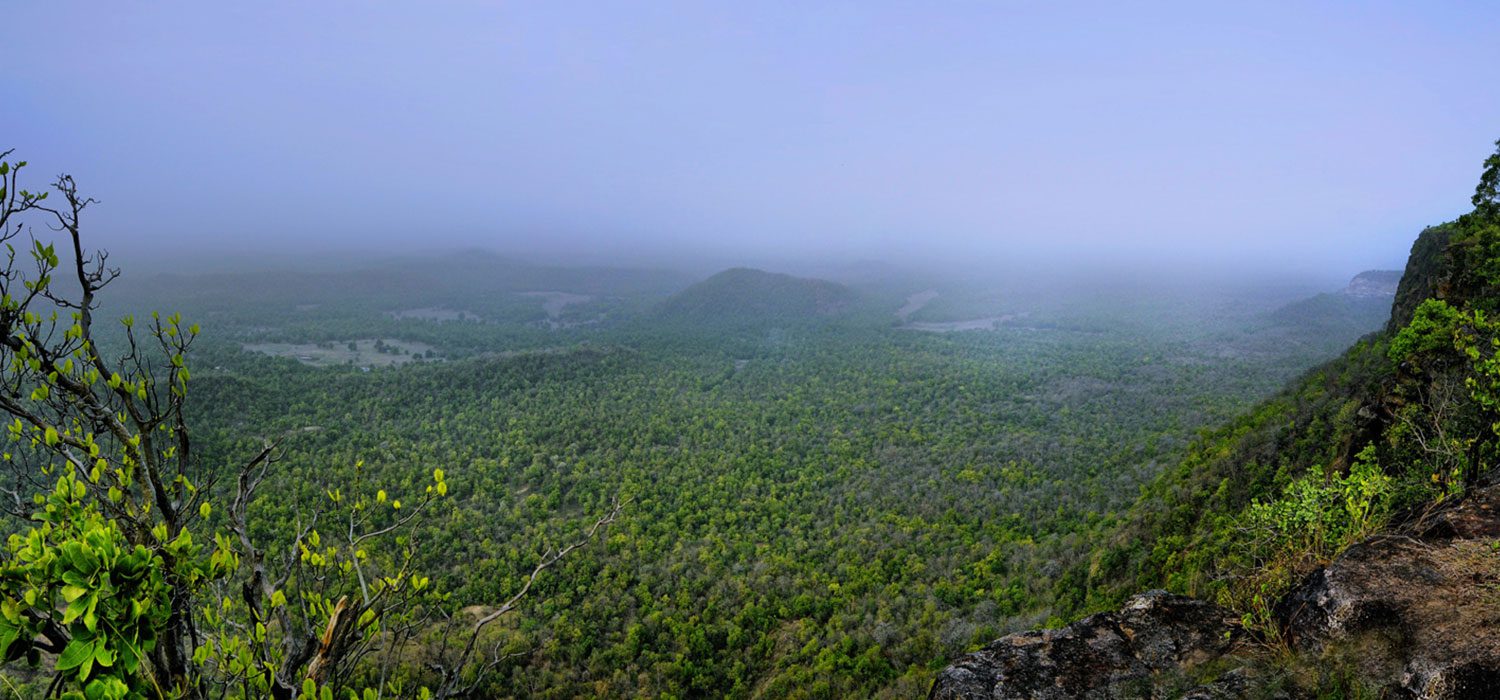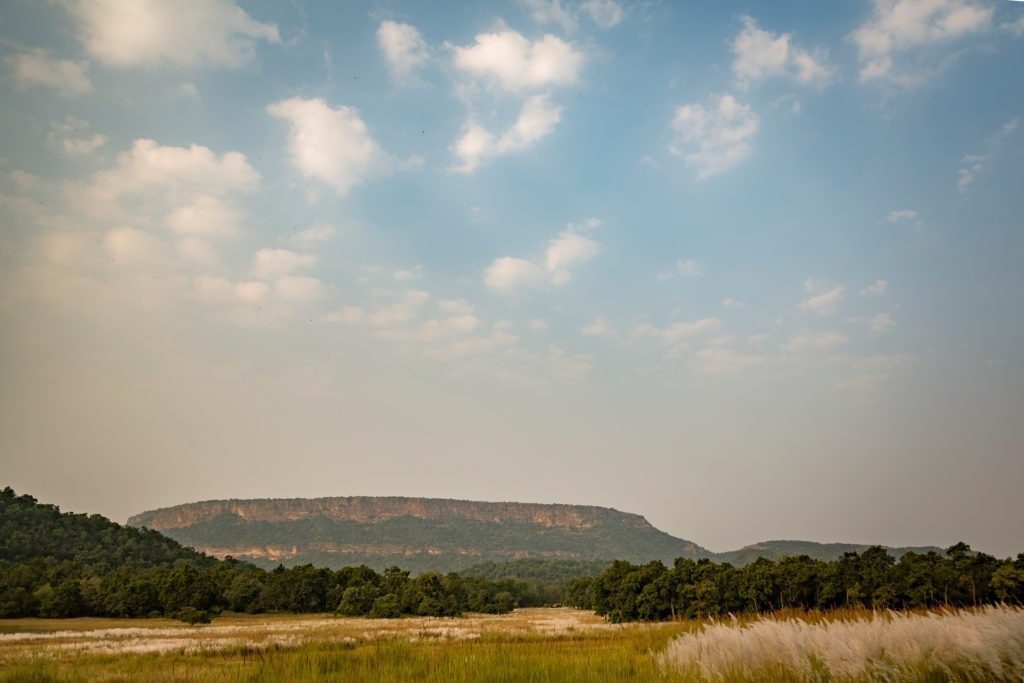Bandhavgarh national park is one of the famed tiger abodes of India, sheltering more than 75 tigers. Its expanse weaves both core and buffer zones making a total of 1536 sq. km.
It’s a paradise for big cat lovers, photographers, and wildlife filmmakers. Leopard, wild elephants, sloth bear, spotted deer, sambhar, barking deer, Indian gaur, jackal, langur, and macaques are some of the larger mammals found in Bandhavgarh.
On record, Bandhavgarh fosters 37 species of mammals, 80 species of butterflies, and more than 250 species of birds.
Core Zone and Buffer Zones of Bandhavgarh National Park
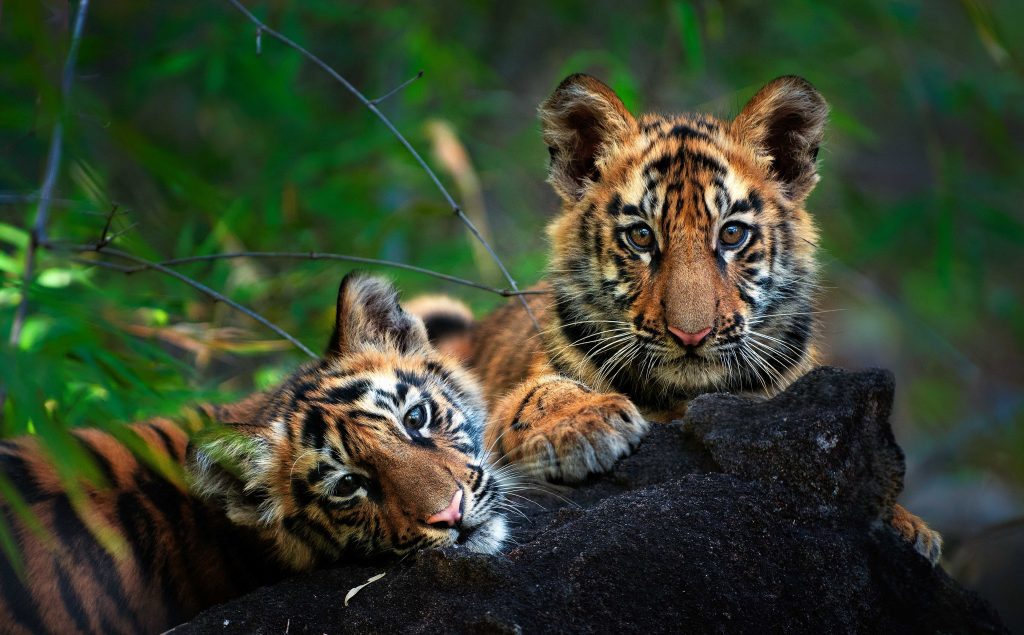
The core zone is the central part of the tiger reserve and it shares its boundary with the buffer zone. The core zone is the most important area of the national park with regulated tourism activity permitted in a small part of the core. There is no human habitation allowed inside the core & no forest produce is permitted to be extracted.
The buffer zone is the area that surrounds or adjoins the core areas & helps in dispersing wild animals & literally acts as a buffer for the core zone. The buffer zone is a multi-use area where human habitation and other activities are permitted in a regulated manner.
The 3 core zones of Bandhavgarh National Park are Tala, Magadhi, and Khitauli with an area of 716 sq. km and the remaining 820 sq. km is of the 3 Buffer zones Dhamokhar, Johila (Kalwa), and Panpatha (Pachpedi).
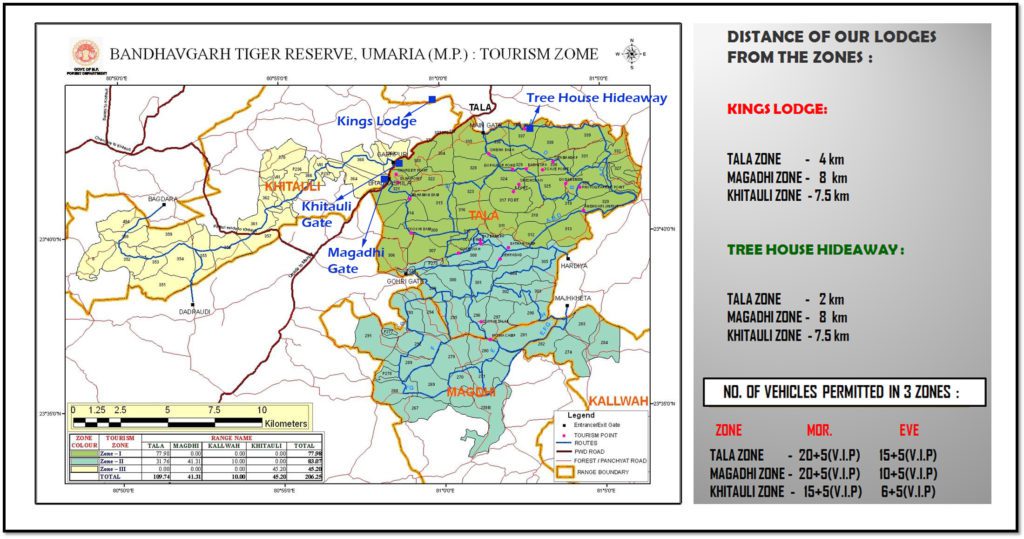
Core Zones Of Bandhavgarh National Park
Tala Zone
Tala zone of Bandhavgarh is the park’s oldest zone, where Bandhavgarh fort is situated. There is a 10th-century statue of Vishnu, Shesh Shaiya which is highly revered and is a major tourist attraction. Shesh Shiya is the point of origin of the Charan Ganga river, which is the lifeline of the park and many large meadows. Bari Gufa caves from the 10th century are also located here.
Tala zone includes the famous Chakradhara and Rajbhera meadows that offer scenic views and exceptional sightings. Many famous documentaries on Tigers have been filmed around these meadows including The Hunt & Dynasties. Tala zone is characterized by towering Sal forests, hillocks, and grasslands.
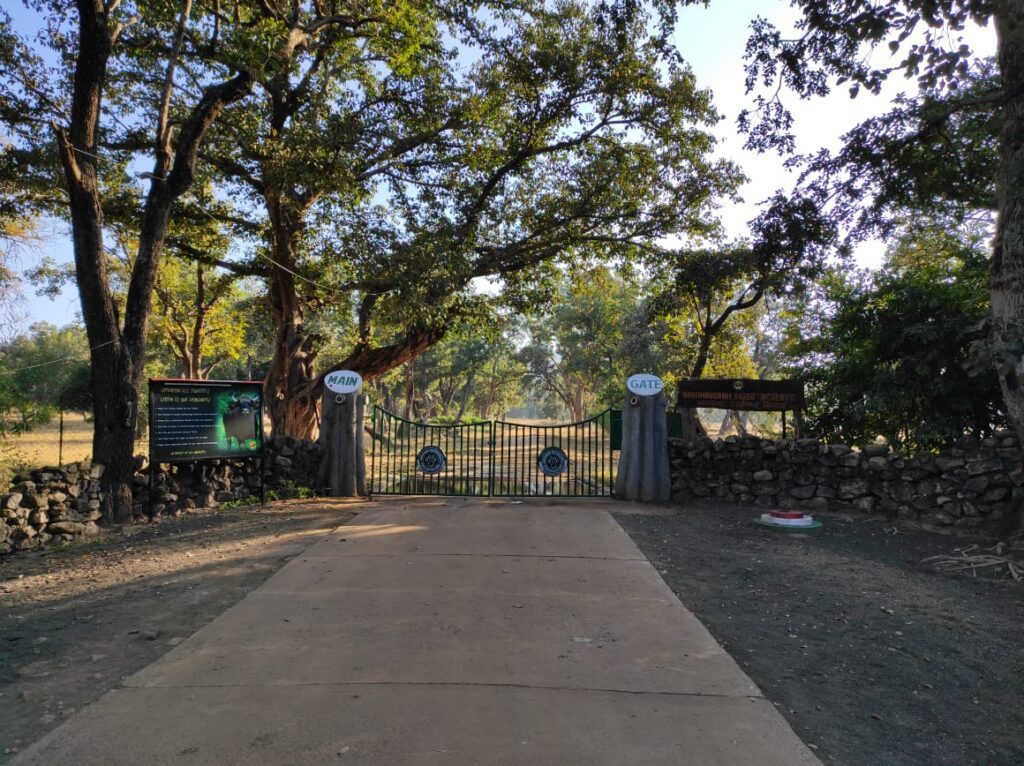
Magdhi Zone
Magdhi is the zone characterized by grassland and mixed dense forest cover. A number of natural and manmade water holes like Sukhi Patiha, Dabhadhole, Charkpwaha, Murdhawa are in Magdhi. In recent years Magdhi has come up as the best place for tiger sightings in Bandhavgarh.
Also Read: Best Wild Life Safaris in India
.
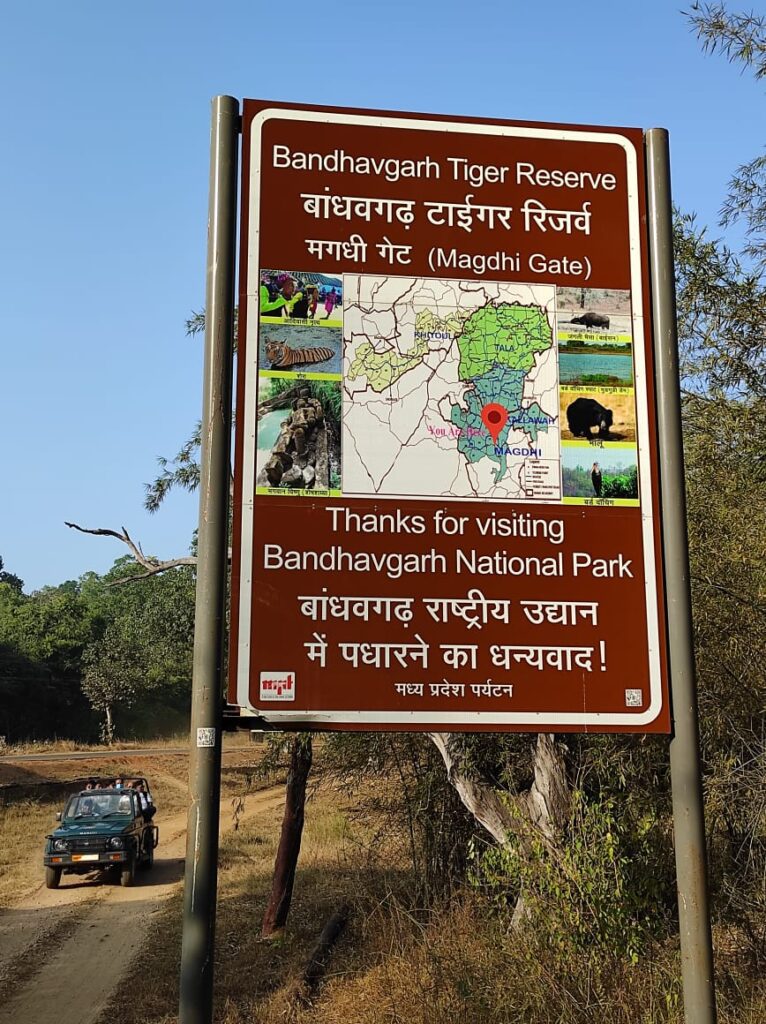
Khitauli Zone
Khitauli zone is more of a dry-deciduous forest and has come up as a hot spot for Tiger sightings in the last few years. About a year back a herd of migrant wild elephants moved here and have established Khitauli as their home. They have ample food in the form of bamboo cover. Khitauli zone is also good for sighting neelgai, four-horned antelope, and chinkara.
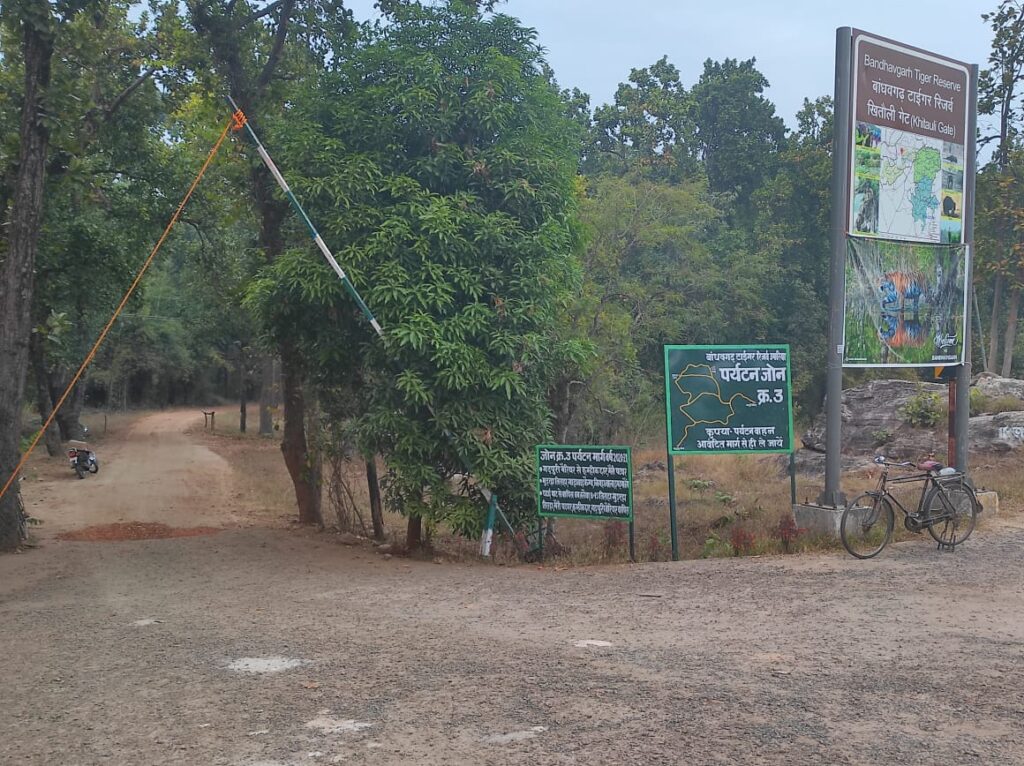
Luxury Wildlife Lodge at Bandhavgarh- Kings Lodge
The lodge is ensconced amidst 2 Sal forested hills of Bandhavgarh National Park. The Kings Lodge is an ecolodge nestled in a large natural forested estate of 14 hectares in Rancha village. The Lodge enjoys unparalleled woodlands and wilderness amongst well-appointed surroundings.
The best Resort in Bandhavgarh National Park Kings Lodge, Bandhavgarh has 10 cottage rooms and 8 stilt cottage rooms with en-suite modern bathrooms. It is spread across a natural forest offering great ambiance and solitude. It is strategically located to access all gates of the park swiftly yet far enough to ensure a great wilderness and a discerning experience.
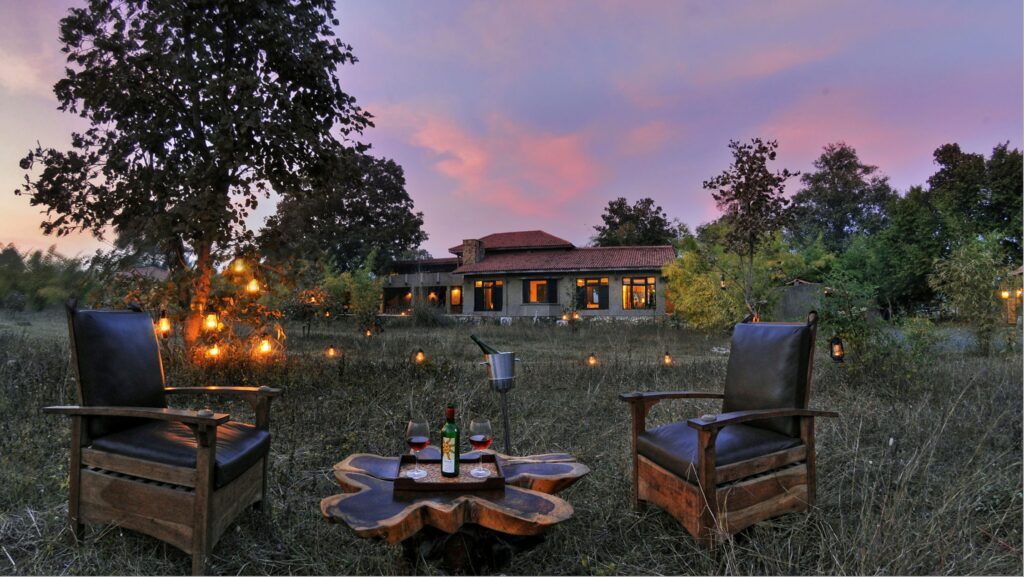
Buffer zones of Bandhavgarh National Park
Being under-rated buffer zones are seldom preferred for safaris, as it melds some villages, farmlands, scrub forests, grasslands, and dense vegetation. It’s an ideal habitat for four-horned antelope, chinkara, wolves, and blue bull.
There is a myth that tigers are only sighted in the core zone of the park. Tigers are highly territorial cats and not every individual is fortunate enough to make his or her domain in the prime locations of the park. The sub-adults start establishing their own territories around the age of 2-3 years and usually have to content themselves with not the best part of the forest which is in buffer or territorial forests.
Due to good protection in the last decade tiger population has gone up tremendously and all forest pockets have their own resident tigers today. Many tigers have travelled long distances to populate lesser-known sanctuaries and smaller forest patches also. Though prey base is limited in these areas tigers are thriving on feral cattle.
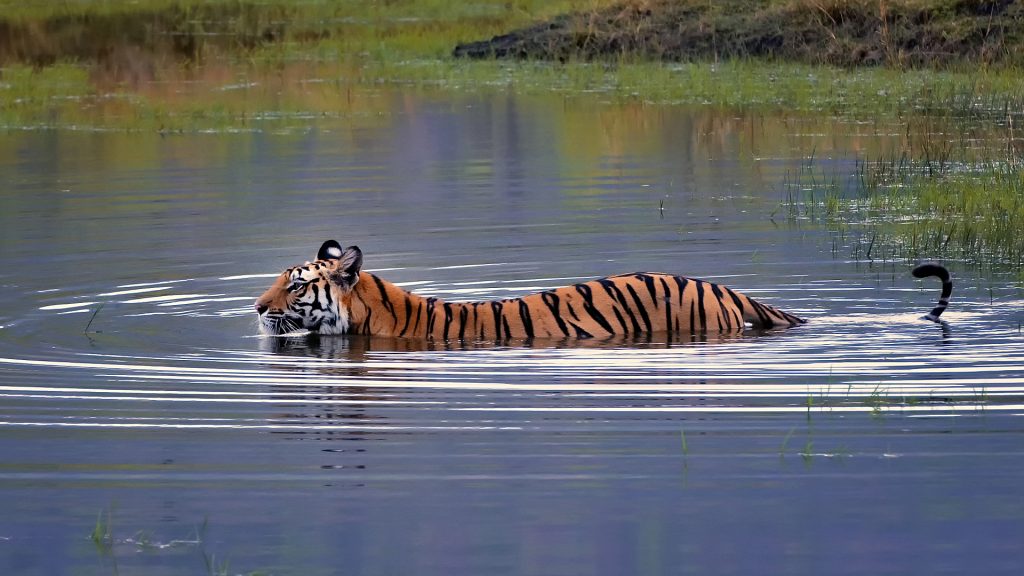
Buffer zone is open for tourists throughout the year. With the new permissions granted for Night safari (7.00-9.30 pm), the hidden nocturnal gems are also sighted along with tigers. An overview of the 3 buffer zones of Bandhavgarh.
Dhamokhar Buffer
An extension to Magadhi zone – Dhamokhar buffer’s entry point lies between Mahaman and Parasi village. It is 14 km away from Tala. It covers Jamunia, Jhanjh, Mudgudi, Kehrawah, Kadewaha, Madehavah, Kalwadhaar and Badawar regions. This zone features Mudgudi dam, a few natural caves of Sehimaada, Kadewaha grassland, etc. ideals for wildlife spotting.
Johila Buffer
An extension to Tala zone – Johila buffer’s entry point lies near Chechpur village, on the way towards Manpur – Shahdol. It is 35 km away from Tala village. Named after the scenic Johila waterfall, it’s an attraction for tourists during buffer safari. Johila rises from Amarkantak and drains to Son river. Kuthulia waterfall, Chindia ghaat, Badia ghaat, Zurnar ghaat, etc. are other attractions in this buffer.
Panpatha
An extension to Khitauli zone – Panpatha buffer’s entry point lies near Pachpedi village. It is 25 km away from Tala village. The major attractions of this area are Chinkara, four-horned antelope, blue bull, and even wild dogs. The forest is covered with bamboo and deciduous trees. A beautiful stream populated with Arjun trees is a scenic point for breakfast and lunch for tourists in this zone.
Planning a trip to Bandhavgarh National Park? Know how to reach this amazing destination with ease. Check out our guide on the best ways to reach Bandhavgarh National Park for an unforgettable wildlife adventure!
Contact us for bespoke safari experiences.
Email : [email protected] [email protected] Call : +91-11-4013 6332.

